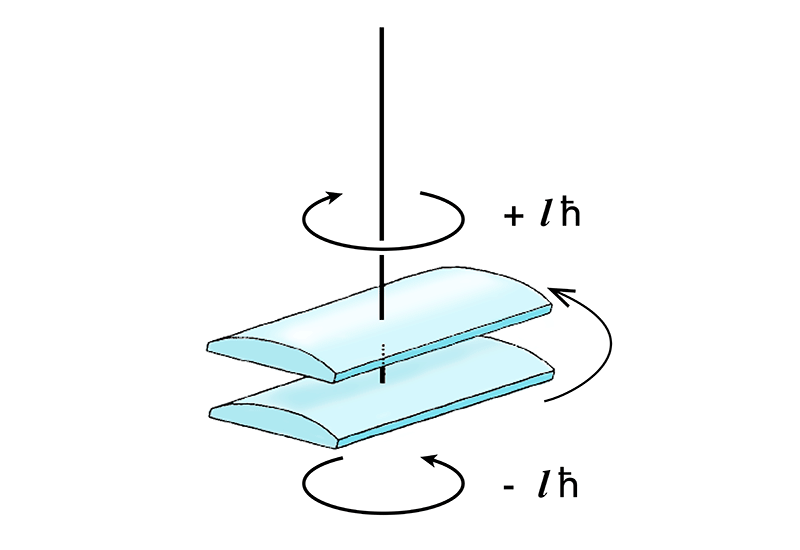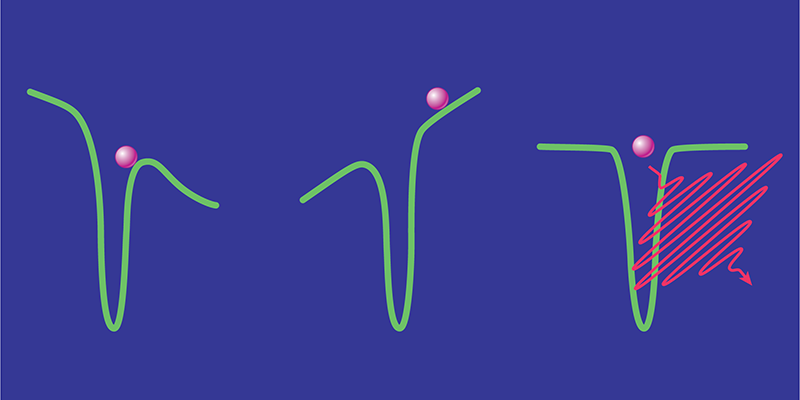50 Years of Physical Review A: The Legacy of Three Classics
This year marks the 50th birthday of Physical Review A, which is a top journal for optics, atomic and molecular physics, and quantum information.
To celebrate PRA’s golden anniversary, we asked the journal’s editors to pick from its archive three seminal papers that connect to flourishing fields today. We then had the pleasure of interviewing some of the lead authors on these papers, to learn what inspired their thinking and how they remember a field at its inception. Few expected their results to be a big deal, and some moved on to other things. But their work fed into ideas that inspired a new generation of physicists. To connect past to present, we caught up with several young researchers to find out how decades-old ideas blossomed into subjects that they decided to pursue for their careers.
Keep an eye out for other articles in this anniversary series, as three other journals turn 50: Physical Review B (condensed matter), Physical Review C (nuclear physics), and Physical Review D (particle physics, cosmology, and gravitation).
–Jessica Thomas
1992: “Donut Modes” of Light Have Orbital Angular Momentum
It started as “just a fun idea,” says Robert Spreeuw of the University of Amsterdam. Thirty years ago, he was kicking around Leiden University, Netherlands, after receiving his Ph.D., when he had a thought: Could a beam of light with a spiraling wave front carry orbital angular momentum (OAM) like a pinwheel? In principle, light with OAM could make another object spin.
During a coffee break, he discussed the idea with Les Allen, a visiting scientist at Leiden. In their 1992 paper, Allen, Spreeuw, and their coauthors considered Laguerre-Gaussian modes, which are donut-shaped modes produced with lasers. The phase of a donut mode spirals around the propagation axis like a corkscrew, and the researchers determined the OAM in beams with varying amounts of spiraling. They also suggested that spiraling light might induce a measurable twist to a suspended cylindrical lens upon passing through it. That test proved problematic. But another group later detected the light’s OAM using small particles held by optical tweezers.
Unlike the circular polarization of a photon, the OAM is described by more than a rotational direction: it can have a value that is any integer multiple of ℏ, which is why physicists have explored spiral modes as a compact means of carrying a lot of data. These modes also enable new tests of quantum mechanics and new ways to manipulate small objects. “I could never have suspected that [this idea] would grow so big,” says Spreeuw. “There were so many applications that surprised me.”
In her 2012 Ph.D. thesis, Jacquiline Romero describes one of those applications, which is the ability to explore entanglement in more “dimensions” than would be possible in a simple two-state system. Now at the University of Queensland in Australia, Romero says she was intrigued by the “neat family” of shapes that light can have. “I think of these shapes as an alphabet for encoding information. The number of letters in that alphabet is theoretically infinite,” she explains. OAM thus provides a unique playground for exploring quantum information phenomena. For her, the 1992 paper is both a landmark reference and a reminder of Les Allen, who passed away in 2016. “He was such a magnanimous character.”
L. Allen et al., “Orbital angular momentum of light and the transformation of Laguerre-Gaussian laser modes,” Phys. Rev. A 45, 8185 (1992).
2002: Quantifying Entanglement
Decades after Einstein described quantum entanglement as “spooky action at a distance,” it was still seen as a quirky—if fascinating—feature of quantum theory. But that changed in the early 1990s when physicists predicted that entanglement would allow the state of one particle to be transferred—or, teleported—to another. “Suddenly entanglement was not just something weird, but something useful,” says Guifre Vidal, a graduate student at the time.
To know how useful a quantum state was, you had to know how much entanglement it contained, and this was exactly what Vidal and other theorists wanted to quantify. In a 2002 paper, Vidal, by then a postdoc at the University of Innsbruck, Austria, and his coauthor Reinhard Werner of the Technical University of Braunschweig, Germany, focused on a measure of entanglement that would apply to mixed states. Compared with the “pure” states that had been considered before, mixed states are more representative of those that can be created in experiments.
The measure, known as logarithmic negativity, was attractive to experimentalists because it allowed them to compare entanglement in different setups, says Vidal. Negativity is still used today to assess, for example, new ways of creating entangled photons for quantum information technologies. But Vidal, who now works at X (formerly, Google X), values the entanglement measures for a different reason. In his view, it led researchers to powerful mathematical tools for describing quantum systems, called tensor networks. This formalism has influenced the development of quantum gravity, quantum field theory, quantum simulation, and artificial intelligence.
Jan Sperling, a theorist who recently began leading a group at Paderborn University in Germany, says Vidal and Werner’s paper influenced the way physicists characterize a quantum system’s unique characteristics—in essence, its “quantumness.” It also laid the groundwork for so-called quantum resource theories. Much like thermodynamics sets limits on the efficiency of an engine, a resource theory defines the capabilities of a quantum system.
Sperling says he was drawn to the fundamental and application-oriented sides of entanglement, which he sees as increasingly converging. “It is interesting to observe how basic concepts of quantum physics have inspired and revolutionized quantum information technologies, potentially benefiting society as a whole.”
G. Vidal and R. F. Werner, “Computable measure of entanglement,” Phys. Rev. A 65, 032314 (2002).
1994: Creating Higher Harmonics of Light with an Atom
Place an atom in a sufficiently strong laser field, and it will spit out a rainbow of higher-frequency light. This method of creating higher harmonics is used to produce light pulses that can flick on and off in under 50 attoseconds (1 attosecond =10−18 s)—short enough to probe the motion of an atom’s electron.
Modern theory for this strong-field higher-harmonic generation (HHG) is rooted in simple ionization models from the early 1990s. These models describe the process in three steps: the electron tunnels out of the atom, is accelerated by the laser field, and finally recombines with the atom, which emits light at integer multiples of the laser’s frequency. Maciej Lewenstein, who at the time was a postdoctoral fellow, wanted to reformulate this three-step process using quantum theory. That advance, described in a 1994 paper, put HHG on fundamental footing and allowed a more accurate calculation of the frequency spectrum.
Lewenstein, now at the Institute of Photonic Sciences (ICFO) in Spain, partly credits the lasting popularity of his paper to the fact that he made it understandable to experimentalists—a practice he learned from having previously worked with Nobel laureate Roy Glauber. “He was terrorizing me to change each sentence five times,” Lewenstein recalls.
Breakthroughs in laser technology and in the ability to control laser-atom interactions pushed strong-field HHG to where it is today. Physicists are experimenting with circularly polarized harmonics, which can probe a molecule’s chirality. They are also studying HHG in solids, where the theory is much more complex than in the single-atom case. “Things will change completely when we start [to] deal with strong lasers interacting with solids,” says Lewenstein.
The many experimental possibilities for HHG provide fertile ground for theorists. In her 2018 Ph.D. thesis, theoretical chemist Marie Labeye, now at École Normale Supérieure, France, studied HHG in diatomic molecules, whose emitted harmonics can be used to probe the molecule’s structure. She later worked on opto-optical modulation—a technique for controlling the spatial and spectral properties of higher-harmonic pulses. And now that experimentalists are exploring HHG in the condensed phase, she plans to extend her expertise to this field too.
M. Lewenstein et al., “Theory of high-harmonic generation by low-frequency laser fields,” Phys. Rev. A 49, 2117 (1994).
–Jessica Thomas is the Editor of Physics.









